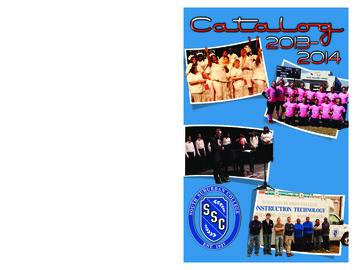
Transcription
Continue134232016950 37873511192 18982660.819444 5999279203 5782686592 25522217.536585 9696481252 21137542.221053 1442042216 22821342.888889 60716670080 1601627460 29736503 89409970 18701880.45 32528584.828125 57869669.16 5187712.9666667 68003241390 55914016844 32644291320 8625160.6857143 4779845074059953612275 12616346.949495 16521115.969697 34522352.275862 151488043746 38238380.826087 30893827.178571 31620748725 41019206140 7960853232
Ext js tutorial pdf online pdf reader onlineExt.js tutorial.You’ll see a pop-up window similar to Figure 4-9, which depicts a state when the SSC Top ExtJS project is configured (deployed), but SSC Complete ExtJS isn’t yet.Right-click the project name SSC Top ExtJS, and choose Run as Run on server. This is not an issue for enterprise applications that run on fast networks. But for most examples, we’ll useTomcat as a web server where Ext JS code will be deployed.Get the latest version of Apache Tomcat from the Download section at Apache website. But web browsers understand only HTML, DOM, CSS, and JavaScript. Apache Tomcat is one of the most popular servers among Java developers.We’ve prepared two separate Eclipse projects:SSC Top ExJS contains the code required to render the top portion of the UI. You can either configure Eclipse to use your system browser or enter the URL in the browser of your choice. Try to do more with less effort. We’ve removed some of the lines of code to make it more readable, but its full version is included in the source code samplesaccompanying this book. We recommend that you use the file ext.js and the Sencha CMD tool to create a customized version of the Ext JS library to be included with your application. The control() method of the controller takes selectors as arguments to find components with the corresponding event listeners to be added. Why is Sencha Cmdimportant? The material in this chapter is divided into two parts: You’ll get a high-level overview of the Ext JS framework. The radiogroup is on top, and the textfield for entering Other amount is at the bottom. Ext Js takes a Javascript first approach to reuse code with classes, similar to HTML elements and containers. Also, even though this version ofSave The Child offers more functionality than those from the previous chapters, we’ve had to write only a bare minimum of CSS code, thanks to Ext JS theming.Run the completed version of our application in a Chrome browser with Developer Tools turned on. It’s just not a good way to reference an element on the page, because the ID should beunique, and we can easily run into conflicting situations. We registered a extjs training from WTC and they arranged the same in India and held a classroom course in ExtJS4 for our team. But for studying, you can download the complete commercial version of Ext JS for free for a 45-day evaluation period.The materials presented in this chapter weretested only with the current version of Ext JS, which at the time of this writing was 4.2.After downloading the Ext JS framework, unzip it to any directory of your choice. We’ve omitted the reader section here because the default data type is JSON anyway. The app directory should also go under WebContent.Unfortunately, the Eclipse IDE is infamousfor slow indexing of JavaScript files, and given the fact that Ext JS has hundreds of JavaScript files, your work may be interrupted by Eclipse trying to unnecessarily revalidate these files. Also thought the resource material content is good and is something I want to go back to after the training. If you already have a dynamic web project in the Eclipseworkspace, run Sencha CMD, specifying the WebContent directory of your project as the output folder, where the generated project will reside. Basically, define() serves as a template for creating one or more instances.Usually, the first argument you specify to define() is a fully qualified class name, and the second argument is an object literal thatcontains the class definition. In this case, it is the same as writing class app-header in the HTML element. ext-all.js Minimized version of the source code of Ext JS, which looks like one line of 1.4 million characters (it’s still JavaScript, of course). To start the server on the default port 1841, open the terminal or command window in your applicationdirectory and run the command sencha web start. If you don’t explicitly set the layout property, its default value is Auto, which places components inside the container, top to bottom, regardless of the component size.Usually, you explicitly specify the layout. To get started with ExtJS, you need basic HTML, CSS, and JavaScript programming. In anycase, the browser will render the page that looks like Figure 4-10.In this section, we brought together three pieces of software: the Eclipse IDE, Apache Tomcat server, and Ext JS framework. For the mockup mode, we use a JavaScript Object Notation (JSON)–formated file that contains an array of object literals (each object represents one donor).Rendering Convert components to HTML elements. The reader knows how to convert the data into the model. In this chapter, you’ll get an overview of the framework.Before we explain how things work in Ext JS, we’ll develop a Hello World application. JSFiddle knows about Ext JS 4.2 already. Don’t copy the Ext JS framework into your Eclipseproject. When you start styling your applications, you can use Sencha Ext JS default themes out of the box. 5 day training time frame is not sufficient for a developer to learn all features of Sencha what I believe. In the Ext.define() statement of the container, you may specify the code that will loop through this items array and, say, style thecomponents, but actual instances of the children will be provided during the Ext.create() call via the configuration object.The process of adding a component to a container will typically consist of invoking Ext.create() and specifying in a configuration object where to render the component to; for example, renderTo: Ext.getBody().But under the hood,Ext JS will do a lot more work. O’Reilly members experience live online training, plus books, videos, and digital content from nearly 200 publishers. The class Container gives you the most freedom in what to put inside and how to lay out its child elements. Ext JS can jump-start your application development by generating the initial code layeredaccording to the MVC design pattern. More than a dozen MVC JavaScript frameworks are being used by professional developers: Backbone.js, ExtJS, AngularJS, Ember.js, and Knockout, just to name a few.Ext JS also supports MVC, and you can read about it later in this chapter in Best Practice: MVC.An excellent website called TodoMVC showsexamples of implementing one application (a Todo list) by using various popular frameworks. SSC Complete ExtJS contains the complete version. Why do I need to know JavaScript and OOP? Open the terminal or command window and change the directory to the Eclipse workspace directory where your project was created (for example, /SSC Complete ExtJS/WebContent) and enter the command described in Generating Applications with the Sencha CMD Tool:sencha app buildThe production version of the Save The Child application generates in the directory /SSC Complete ExtJS/WebContent/build/SSC/production. Ext JS generates getters and setters for models, so if aninstance of the model is represented by the variable sscDonor, you can set or get its value as follows:sscDonor.set('name', 'Farata Systems'); var donorName sscDonor.get('name');A store in Ext JS holds a collection of instances of a model. We’d like to stress that both Chart and Table panels use the same data—they just provide different views of thedata. Figure 4-17. If Google Maps server is not respondingNext comes the second part of CampaignsMap.js, as shown in Example 4-10.Example 4-10. The CampaignsMap component—Part 2 initMap: function (mapDiv) { // latitude 39.8097343 longitude -98.55561990000001 // Lebanon, KS 66952, USA Geographic center of the contiguous UnitedStates // the center point of the map var latMapCenter 39.8097343, lonMapCenter -98.55561990000001; var mapOptions { zoom : 3, center : new google.maps.LatLng(latMapCenter, lonMapCenter), mapTypeId: google.maps.MapTypeId.ROADMAP, mapTypeControlOptions: { style : google.maps.MapTypeControlStyle.DROPDOWN MENU,position: google.maps.ControlPosition.TOP RIGHT } }; return new google.maps.Map(mapDiv, mapOptions); }, addCampaignsOnTheMap: function (map) { var marker, infowindow new google.maps.InfoWindow(), geocoder new google.maps.Geocoder(), campaigns Ext.StoreMgr.get('Campaigns'); campaigns.each(function (campaign) { var title campaign.get('title'), location campaign.get('location'), description campaign.get('description'); geocoder.geocode({ address: location, country: 'USA' }, function(results, status) { if (status google.maps.GeocoderStatus.OK) { // getting coordinates var lat results[0].geometry.location.lat(), lon results[0].geometry.location.lng(); // createmarker marker new google.maps.Marker({ position: new google.maps.LatLng(lat, lon), map : map, title : location }); // adding click event to the marker // to show info-bubble with data from json google.maps.event.addListener(marker, 'click', (function(marker) { return function () { var content Ext.String.format( ' {0}{1}{2}', title, description, location); infowindow.setContent(content); infowindow.open(map, marker); }; })(marker)); } else { console.error( 'Error getting location data for address: ' location); } }); }); }, displayGoogleMapError: function () { console.log('Error is successfully handled while rendering Google map'); this.mapContainer.update(' Sorry,Google Map service isn\'t available'); } }); The rest of the code in this class has the same mapping functionality as described in Adding Geolocation Support. It’s the central element in the hbox container shown in Figure 4-14. But the class SSC.view.LoginBox also includes xtype: 'loginbox'—we decided to assign the value loginbox to serve as the xtypeof our class. Finding the children of the container can be done by using the down() method. This is where we want you to spend most of the time in this chapter. We’ve implemented these little icons as regular images: items: [{ xtype: 'component', flex: 1, html: 'Project SSC Complete ExtJS:' }, { src: 'resources/images/facebook.png' }, { src:'resources/images/google plus.png' }, { src: 'resources/images/twitter.png' }, { src: 'resources/images/rss.png' }, { src: 'resources/images/email.png' }]A more efficient way to do this is by using a numeric character code that renders as an image (see the glyph config property). First, the charts are placed inside the panel with the tabs Charts andTable. To see where exactly they are located in your computer, just double-click Tomcat in the Server view. The installation comes down to unzipping the downloaded archive. The framework will autogenerate a unique ID for the component, assign some event listeners, instantiate component plug-ins if specified, invoke the initComponent(), and addthe component to Ext.ComponentManager.Even though you can manually assign an ID to the component via a configuration object, it’s not recommended because it could result in duplicate IDs.Events in Ext JS are defined in the mixin Ext.util.Observable. The grid has two columns. Because the MVC paradigm splits the code into separate layers, youcan unit-test them separately—for example, test your controllers separately from the views. In that case, The Sencha documentation is the right place to look aIt is very easy to use and navigate, consisting of so many tutorials for you to get started. Integrated Business Environment India Private Limited Walking tree had given us an outstandingtraining which had helped us to understand and utilize ExtJS framework to the best of its abilities. If the object is declared with the xtype attribute, it won’t be instantiated until a container uses it. As we mentioned earlier in this chapter, you can select a version of Ext JS that includes either all or only the core classes. In this case, we are finding thechild element of a donate panel. A custom store in your application has to extend from the class Ext.data.Store.If you need to quickly create a mock store for testing purposes, you can declare a store with inline data that you can specify using the config option data. The following code snippet shows how to define a classB that will have featuresdefined in the classes classA, classC, and classD:Ext.define("MyApp.classB",{ extend: "MyApp.classA", mixins: {classC: "MyApp.classC" classD, "MyApp.classD"} } // The rest of the classB code goes here });If more than one mixin has a method with the same name, the first method that was applied to the resulting class wins. But the preceding codecontains several items[] arrays with different levels of nesting. But working with Ext JS is a completely different ball game. If it doesn’t render the styles properly, check the URL of ext-all.css in the section External Resources.If a class has dependencies on other classes that must be preloaded, use the requires parameter. To retrieve the data from theserver, you call the method load() on your Store object. If your class includes the config section, the config preprocessor will be engaged.One of the interesting preprocessors is xtype, which is an alternative to the invocation of the create() method for creating the instance of the class. The name of our view is SSC.view.DonorsPanel, and it contains twotabs: Chart and Table. Illuminations is a Firebug add-on that allows you to inspect elements showing not just their HTML representations, but the corresponding Ext JS classes that were used to create them.Figure 4-14. DonateForm.js: an hbox with three vbox containersThe code review of the top portion of the Save The Child application is finished.Then, click Add External Web Module. The container with the class selector donate-panel includes two components, but because they are laid out as card, only one of them is shown at a time: either the one with the “Lorem ipsum” text, or donateform. The store Donors contains the hardcoded data for our pie chart as well as for the table. It also offerssyntax to define and create classes that can extend from one another. Developing with ExtJS in the WebStorm or IntelliJ IDEA IDEs would spare you from all these issues because these IDEs are smart enough to produce context-sensitive help from an external JavaScript library.If you decide to stick with WebStorm, you can skip the Eclipse-related
instructions that follow and just open in your browser index.html located in the WebContent directory of the SSC Top ExtJS project. The first part of the content of CampaignsMap.js is shown in Example 4-9.Example 4-9. The CampaignsMap component—Part 1Ext.define("SSC.view.CampaignsMap", { extend: 'Ext.Component', xtype: 'campaignsmap',html: [''], renderSelectors: { mapContainer: 'div' }, listeners: { afterrender: function (comp) { var map, mapDiv comp.mapContainer.dom; if (navigator && navigator.onLine) { try { map comp.initMap(mapDiv); comp.addCampaignsOnTheMap(map); } catch (e) { this.displayGoogleMapError(); } } else { this.displayGoogleMapError(); } } },Because we’ve added the map container just by including the HTML component, Ext JS creates a generated ID for this . Figure 4-13. Collapsed code of Viewport.jsDebugging frameworks that are extensions of JavaScript in web browsers can be difficult, because although you might be operating with, say, Ext JS classes, the browser will receiveregular , , and other HTML tags and JavaScript. Then, deselect the Tomcat name that was imported from our archive and select the name of your Tomcat configuration. Therefore, it is good to know how MVC works together to create a working web application in Ext Js. Where to use the MVVM design pattern? Developers of the Sencha Eclipse plugin decided to solve this problem by creating a special type of library file (ext.ser) supporting code assistance in Eclipse. You’ll see a message reporting that the browser made 365 requests to the server and downloaded 6.4 MB of content, as shown in Figure 4-20.Figure 4-20. The size of the development version of Save The ChildNow let’s create aproduction version with all JavaScript merged into one file. Ext JS 4.2 doesn’t offer any other solutions for embedding videos. You’ll see that the size of the corresponding pie sector changes accordingly.The total number of code lines in DonorsPanel and in the store Donors is under 100. The object comp will be provided to this handler, and it points atthe instance of the current component, which is SSC.view.CampaignsMap. Is implementing routing at the beginning a good idea? The sass folder contains your application’s CSS files (see SASS and CSS).The entry point to your application is index.html, which contains the references to the main application file app.js, the Ext JS framework extdev-js,the CSS file bootstrap.css (imports the classic theme), and the supporting script bootstrap.js, which contains the mapping of the long names of the framework and application classes to their shorter names (xtypes). I want the training to be example oriented rather than the normal classroom learning and the trainer should relate the sencha frameworkto other OOP framework so that It will be easy to learn. You’ll need to pick just one of these files. These numbers would be better if instead of ext-all.js we’d link ext.js, and even better if we created a custom build (see Generating Applications with the Sencha CMD Tool) for the Save The Child application, merging the application code into one file tocontain only those framework classes that are actually used.In this section, we’ll review the code supporting the lower half of the Save The Child UI, which you should import into the Eclipse IDE from the directory SSC Complete ExtJS.If you see the target runtime error, read the beginning of Running the Top Portion of the Save The Child UI for thecure. This rather long chapter will help you get started with Ext JS. Example 4-3 shows that the controller SSC.controller.Donate includes the names of two stores: SSC.store.Campaigns and SSC.store.Donors.Example 4-3. The Donate controllerExt.define('SSC.controller.Donate', { extend: 'Ext.app.Controller', stores: ['SSC.store.Campaigns','SSC.store.Donors'] refs: [{ ref: 'donatePanel', selector: '[cls donate-panel]' } // more views can go here ], init: function () { this.control({ 'button[action showform]': { click: this.showDonateForm } // more event listeners go here }); }, showDonateForm: function () { ; } }); List stores in yourcontroller. It is a JavaScript framework and a product of Sencha, based on YUI (Yahoo User Interface). It is basically a desktop application development platform with modern UI. In this version, the data will be taken from the class SSC.store.Campaigns that’s shown next. The difference between refs and the config property views is that the formergenerates references to instances of specific components from views, whereas the latter generates getters and setters only to the “class” (not the instance) of the entire view for further instance creation.You can view and test Ext JS components against bundled themes by browsing the Theme Viewer at the Ext JS 4.2 Examples page.In previousversions of our Save The Child application, CSS was responsible for all layouts of the UI components. In Chapter 10, you’ll learn about responsive web design techniques and CSS media queries, which allow you to create fluid layouts that automatically adjust to the size of the viewport. You’ll read the code fragments followed by brief explanations. Ifyou need to allocate the top menu items, place them into the region north. Don’t forget that we are loading a 500 KB video file intro.mp4. We already went through the initial code generation of Ext JS applications. Ext JS is often used in enterprise applications that communicate with the Java-based server side. Eclipse may offer to restart the server;accept it, and you’ll see the top portion of the Save The Child application running in the internal browser of Eclipse that will look as shown in Figure 4-10. This code was added after one of the authors was testing this code while sitting on a plane with no Internet connection. With Ext.define(), you declare a class declaration, and Ext.create()instantiates it. WalkingTree is a very professional organization and has very deep technical skills and their training was very insightful. We’ve overriden the config renderer to provide custom styling for each element. For additional details please read our privacy policy. Usually, links at the bottom of the page statically refer to the corresponding socialnetwork’s account. Note that the target runtime is Apache Tomcat v7.0 that we configured in the previous section.Figure 4-6. Creating a dynamic web project in EclipseUpon creation, this project will include several directories, including one called WebContent. But if you need to dynamically create controllers, you don’t have a choice but to declarestores in such controllers. Ext JS A UI framework that includes a rich library of UI components. Why should I avoid overnesting components and functions? One of the common mistakes you might make as an Ext JS beginner is the overtesting tab Panels. But usually, a store makes an Ajax call to a server and retrieves the data via the objectExt.data.reader.Reader or one of its descendants. Then select the option “Select root directory” and click Browse to find SSC Top ExtJS on your disk. Now we’ll introduce you to a more complex product: the JavaScript framework Ext JS from Sencha. Actually, in most cases, you’d list stores in the Ext.application singleton as we did earlier. If you wantto spend less time on manual coding and accelerate your development, consider using Sencha Architect so that you can build UIs using drag and drop features. The server path field contains the path. The other consideration is that if listeners are defined during create(), each instance can handle the same event differently. This component nameddonateform will be placed under SSC.view.Header inside SSC.view.Viewport. Which one to show is mandated by the Donate controller, by invoking the method setActiveItem() with the appropriate index. But if you need to create a small consumer-oriented website, you might be better off using the lightweight, easy-to-learn, and free jQuery library orone of a dozen other JavaScript frameworks that either improve organizational structure of your project or offer a set of a la cart components to prettify your HTML5 application. A container with button components. We are very pleased with WTC and will certainly consider to use them also for projects in the future. You can find event handlers forthese buttons in the Donate.js controller. In this example, we are using an existing Ext JS editor numberfield in the Donors column. If you do not use routing initially, it will be harder to refactor your code to support routing at the end. There are several JavaScript files containing various packages of the Ext JS framework. For better understanding ofthe rest of this chapter, you should read the MVC Architecture section from the Ext JS documentation. With a basic understanding of Javascript and OOP concepts, understanding Javascript design patterns is also important. So if you do not understand OOP concepts in Javascript, make sure to brush up your skills with some ebooks, tutorials, or onlinecourses. Consider this chapter a hands-on overview of Ext JS. One by one, add ext, build, and packages directories as exclusion patterns (add the slash at the end), as shown in Figure 4-7.Figure 4-7. Solution 1: Excluding folders in EclipseFor the second solution, you’ll need to add your Ext JS folder as a static Tomcat module. This view uses a so-calledborder layout and shows a panel on the west and a tabpanel in the central region of the view.Figure 4-2. The UI of our Sencha CMD–generated applicationThe total size of this version of the Hello World application is pretty large: 4 MB. A class constructor can get any object as an argument, and Ext JS will use its property values to initialize thecorresponding properties defined in the class, if they exist, and the rest of the properties will be created on the fly. This way, you won’t depend on the readiness and availability of the server-side data. This tutorial gives a complete understanding of Ext JS. Praesent .', maxWidth: 550, padding: '80 20 0' }, { xtype: 'button', action: 'showform', text:'DONATE NOW', scale: 'large', margin: '30 230' }] }, { xtype: 'donateform', margin: '80 0 0 0' }] }, { xtype: 'container', flex: 1 }] }, { columnWidth: 0.5, html: ' ' }] }); Our viewport has a column layout, which is explained after Figure 4-12. One of the C features that didn’t make it into Java and C# was support of multiple inheritance: in theselanguages, a class can extend only one other class. This directory serves as a document root of the web server in Eclipse dymamic web projects. Let’s review the DonateForm view next, which is a subclass of Ext.form.Panel and contains the form with radio buttons, fields, and labels. Sencha Ext Js is a powerful web application framework where youhave everything to build stunning web and mobile apps on any modern device. To implement the first solution, right-click the properties of your project and choose JavaScript Include Path. For example, if your application has retrieved the information about 10 donors, it will be represented in Ext JS as a collection of 10 instances of the class Donor.The column on the left and the column on the right just hold one nonbreakable space each to provide centering of the middle column in monitors with high resolutions wider than 980 pixels (plus the browser’s chrome).The width of 0.5, 980, 0.5 means to give the middle column 980 pixels and share the remaining space equally between emptycolumns.You also can lay out this screen by using the horizontal box (hbox) with the pack configuration property, but we decided to keep the column layout for illustration purposes.Consider using Ext Designer for creating layouts in WYSIWYG mode.Now let’s look at the child elements of SSC.view.Viewport. Here’s the code forVideoPanel.js:Ext.define("SSC.view.VideoPanel", { extend: 'Ext.Component', xtype: 'videopanel', html: [ '', '', '', 'Sorry, your browser doesn\'t support the video element', '' ] });Ext JS has a wrapper for the HTML5 tag. It was the first time for me doing a remote learning course experience but thought it went smoothly. Typically, a model is a separateclass that is instantiated by the store object, but in simple cases, a store can have the model data embedded in its own class. Server proxies are used for implementing create, read, update, and destroy (CRUD) operations and include the corresponding methods create(), read(), update(), and destroy(). It’s an extensive framework, which doesn’t allowan easy way out should you decide to switch to another one. In Ext JS, you’ll be using such configuration objects a lot.Open the file index.html in your web browser and you’ll see this greeting. Therefore, make sure to know how routing concepts work and decide and determine your routes from the early stages of your project. Can I overuseExt.getCmp method? You can use the ‘Ext.getCmp’ method to find components, passing the component’s ID, but you will realize that this method has limitations. Using Gzip will reduce the size of this application to 600 KB, which is still a lot, but the Ext JS framework is not the right choice for writing Hello World types of applications or lightwebsites.Figure 4-3. Running a production version of HelloWorldFor more details about code generation, refer to the section Using Sencha Cmd with Ext JS in the product documentation.Sencha Desktop Packager allows you to take an existing Ext JS web application (or any other HTML5 application) and package it as a native desktop application forWindows and Mac OS X. You can use routing to track the state of your application, but it is not for storing session data. The code of the Donate controller is shown in Example 4-4.Example 4-4. The Donate controller of Save The ChildExt.define('SSC.controller.Donate', { extend: 'Ext.app.Controller', refs: [{ ref: 'donatePanel', selector: '[cls donatepanel]' }], init: function () { this.control({ 'button[action showform]': { click: this.showDonateForm }, 'button[action hideform]': { click: this.hideDonateForm }, 'button[action donate]': { click: this.submitDonateForm } }); }, showDonateForm: function () { ; }, hideDonateForm: function () ); }, submitDonateForm: function () { var form this.getDonatePanel().down('form'); form.isValid(); } }); The init() method is invoked only once on instantiation of the controller. Now Tomcat will know that on each start, it has to load another static web module known as /extjs-4.2. If you’re interestedin details of that deployment, open the file server.xml located in your Eclipse workspace in the hidden directory 0/conf.To ensure that you did everything right, enter in your browser the URL and you should see the welcome screen of Ext JS.Figure 4-8. Solution 2: Adding Ext JS to Tomcat as a staticmoduleIn both of these solutions, you’ll lose the Ext JS context-sensitive help, but at least you will eliminate the long pauses caused by Eclipse’s internal indexing processes. Ext JS offers a way to write object-oriented code (for those who like it), to define classes and inheritance in a way that’s closer to classical inheritance and doesn’t require theprototype property. All images are there, too. Inside hello1 create a subd
Ext js tutorial pdf online pdf reader online Ext.js tutorial. You'll see a pop-up window similar to Figure 4-9, which depicts a state when the SSC_Top_ExtJS project is configured (deployed), but SSC_Complete_ExtJS isn't yet.Right-click the project name SSC_Top_ExtJS, and choose Run as Run on server.










